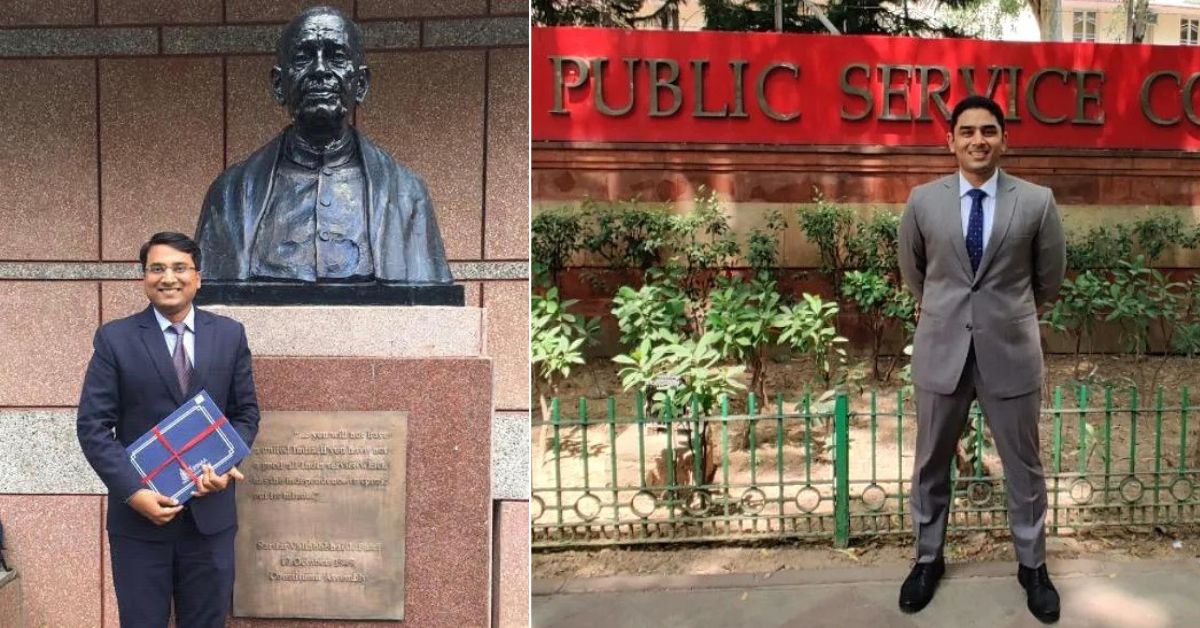10 Game-Changing Tips From IAS Toppers To Ace the UPSC Essay Paper
The essay paper often feels like the most open-ended part of the UPSC Mains — and that’s exactly what makes it so tricky.
Unlike GS papers with clear-cut answers, the essay paper expects you to think, reflect, and write with both structure and soul. You’re given four topics in each section, asked to pick one from each, and then write two full-length essays, each carrying 125 marks.
That blank page can feel overwhelming. But those who’ve cracked it say the key lies in small, steady habits: reading widely, writing often, and learning how to bring your own voice into the exam hall.
To help you get started, we’ve compiled 10 practical insights from IAS officers like T Prateek Rao, Anudeep Durishetty, Nishant Jain, and Saurabh Jassal — each sharing what truly worked for them. Whether you’re still figuring out how to choose topics or trying to improve flow and structure, this guide walks you through their best essay-writing strategies.
1) Start early with essay practice
Many aspirants begin preparing for essay writing too late. Start writing one essay every week as soon as you begin your Mains preparation. Additionally, reviewing essays written by past toppers will help you structure your essays more effectively.
2) Read widely to write better
Diversifying your reading topics is crucial to improving your writing. Reading widely lays the foundation for enhancing writing skills and ensures continuous improvement in your ability to craft compelling essays.
 IAS officers Nishant Jain and T Prateek Rao share tips based on their experiences.
IAS officers Nishant Jain and T Prateek Rao share tips based on their experiences.
3) Choose topics you know well
Half the battle is won if you choose the right topic. When given four topics per section, don’t go by what sounds impressive. Pick what you’re most comfortable with. Familiarity allows you to explore a topic in depth and express your thoughts more clearly.
4) Manage your time smartly
Since you have to attempt two essays, allocate 1.5 hours for each. Spend almost 20 minutes structuring your essay. Even if you think you have it perfectly planned, it’s beneficial to take a few extra minutes to review your structure. Once your structure is set, you should be able to write about 1000 words comfortably in an hour.
 Saurabh Jassal, IAS, suggests allocating 1.5 hours for each essay.
Saurabh Jassal, IAS, suggests allocating 1.5 hours for each essay.
5) Make essays engaging and relatable
Use personal stories, real-life events, or historical examples to draw the reader in. A well-placed anecdote can make your essay memorable and show emotional intelligence, often resulting in higher marks.
6) Craft strong introductions and conclusions
The introduction of an essay serves as the opening scene of a movie. Much like a film needs a compelling start, an essay must begin strong. It should offer a brief insight into what lies ahead while instilling a desire for more in the audience.
A meticulously crafted introduction generates urgency and curiosity, effectively captivating readers and encouraging them to delve into the remainder of the write-up.
While there’s no one-size-fits-all approach to framing introductions and conclusions, you can use quotes or statistics, anecdotes or facts as starting points. The conclusion should convey a balanced, tactful perspective, encapsulating the essence of the essay.
7) Use quotations effectively
Quotations should seamlessly fit the context of your essay, enhancing the topic rather than seeming forced. Ensure that the quotes are relevant and supportive of the essay’s theme, while avoiding any controversial statements.
 Nishant Jain, IAS, says, “Quotes should fit the context and not feel forced. Avoid making controversial statements.”
Nishant Jain, IAS, says, “Quotes should fit the context and not feel forced. Avoid making controversial statements.”
8) Ensure a seamless flow
The flow of the essay is crucial in capturing an examiner’s attention. Each paragraph should organically transition to the next, leaving no lingering questions in the examiner’s mind. Regular practice is key to mastering this flow.
9) Adopt a balanced perspective
Take a moderate stance while writing, avoiding extreme or narrow viewpoints. A broad perspective enriches the essay’s impact. Explore topics from various angles, including social, cultural, economic, political, philosophical, religious, scientific, historical, geographical, and environmental dimensions.
10) Focus on clean, clear presentation
Use short paragraphs, avoid jargon, and write legibly. Underline key points and maintain a neat structure. Don’t neglect grammar and spelling, as they reflect your clarity of thought.
Edited by Khushi Arora.
News